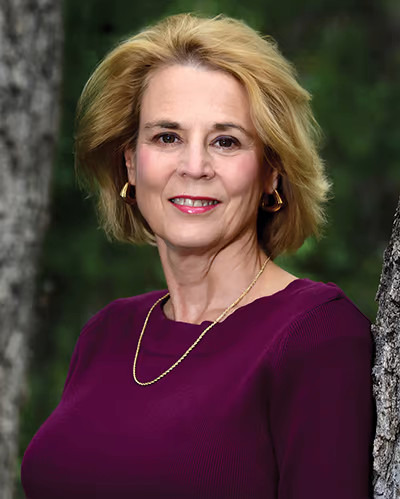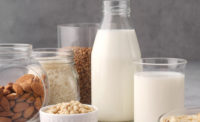Sharon Gerdes pens final Dairy Foods column
Innovation expands lactose-free dairy options

Photo courtesy of minoandriani / iStock / Getty Images Plus

Lactose-free milk remains a bright spot in the milk category. According to information from Dairy Management Inc., retail volume sales are up 11.6% in 2024 year-to-date (YTD) (through July 21), building on average annual growth of 11.4% from 2019 to 2023.
While branded lactose-free products own 73% of lactose-free milk volume in 2024 YTD, both branded and private-label items are seeing double-digit volume gains when comparing volume to the same period last year. Overall, lactose-free milk holds 8.3% share of milk category volume over the latest 52 weeks. Lactose-free has built a strong buyer base. Over the latest 52 weeks, 29 million households, or 22.6% of total U.S. households, purchased lactose-free milk.
Although a significant percentage of the world’s population has some degree of lactose intolerance, many consumers in the United States, Europe and Asia self-diagnose themselves as lactose intolerant, or somehow believe that lactose-free dairy is healthier than regular dairy. The market for lactose-free products is expected to be particularly strong in the Asia Pacific region, where growth is projected at a compound annual growth rate (CAGR) of 8.05% from 2024 to 2031.
Lactose-free innovation
Most major U.S. dairy producers offer a range of lactose-free products. While lactose-free fluid milk is the largest volume of lactose-free dairy, newer technologies have allowed for a wide array of lactose-free products, including various dried dairy ingredients. Green Valley Creamery produces organic lactose-free sour cream, cream cheese, kefir, butter, yogurt, as well as bar, sliced and shredded cheeses.
The cleaving of lactose into glucose and galactose increases sweetness and allows for sugar reduction in flavored milk, but the added sweetness may be an undesirable characteristic in other dairy foods, such as sour cream. Two different configurations of enzymes allow for production of either sweet and unsweet lactose-free dairy. Sweetness is enhanced in lactose-free dairy products produced using β-galactosidase, whereas less sweet products can be produced via a combination of β-galactosidase and glucose oxidase.
Appropriate use of β-galactosidase allows for reduction in total sugar content of 10% to 20%, thus facilitating no-sugar-added products such as pudding and yogurts. No-sugar-added claims are highly popular with consumers. This popularity may be attributed to both the general awareness of limiting sugar in the diet, and the inclusion of the “Added Sugars” data in the Nutrition Facts panel.
Opportunities exist to produce novel lactose-free dairy products with enhanced nutritional benefits including prebiotics, probiotics and antioxidants. One example outlined in a recent technical paper was “Lactose-free ice cream with Lacticaseibacillus casei CSL3, ginger and honey.”
Regulatory standards
In the past, a variety of methods have been used to detect lactose levels in milk and dairy products. The LactoSens R method for determining lactose levels in low lactose and lactose-free dairy products was awarded Official Method of AnalysisSM (OMA 202.01) First Action status in 2020. In 2024, the method was subjected to a multi-laboratory validation study to determine repeatability and reproducibility, and was found to be both accurate and precise.
Threshold levels for claims of “lactose-free” vary around the world. In Denmark, the level to make a lactose-free claim is 10 mg/100 g, whereas in Germany it is 100 mg/100 g, and in China, it is 500 mg/100 g. Additionally, regulations for usage of the terms “low lactose” and “lactose reduced” vary from country to country, with no international agreement on definitions for those terms.
“In the U.S., the Food and Drug Administration does not reference the amount of lactose that can be contained in lactose-free dairy products. However, many U.S. lactose-free dairy products contain 0.1% or less lactose, which can be achieved via the use of enzyme and filtration technologies,” said Mary Wilcox, business consultant at Significant Outcomes LLC.
“Given the increasing interest by consumers for lactose-free product offerings, additional opportunities do exist to use these types of modified products and ingredients in food, beverage and snack formulations,” she added.
The 21CFR 101.13 states that the “use of a ‘free’ or ‘low’ claim before the name of a food implies that the food differs from other foods of the same type by virtue of its having a lower amount of the nutrient, only foods that have been specially processed, altered, formulated, or reformulated so as to lower the amount of the nutrient in the food, remove the nutrient from the food, or not include the nutrient in the food, may bear such a claim.” Therefore, when formulating finished products with this type of nutrient content claim, it is recommended to seek guidance from labeling experts and/or legal counsel.
Farewell from Sharon Gerdes
I wrote my first article for Dairy Foods magazine in October 2003 as the “Dairy Detective” on the topic of “Trans Fatty Acids in Dairy” (see the photo). For the past 21 years, it has been my pleasure to write about dairy, taste new dairy creations, visit dairy farms, and travel the world speaking about dairy.
But the time has arrived for me to focus my attention on family and other pursuits. My friend and extremely capable colleague Mary Wilcox will be assuming the role of “Health and Wellness” columnist for Dairy Foods magazine. Thanks to Dairy Foods magazine for a wonderful 21 years. I wish all our readers good health and wellness in all aspects of their life.
Editor’s Note:
Dairy Foods would like to extend our deepest gratitude to Sharon Gerdes for writing incredibly informative columns for the past 21 years. She has been a tremendous asset to the magazine and will be missed. Please join us in welcoming Mary Wilcox, who has already written some “Health & Wellness” columns. Mary’s next new column will appear in our December issue.
Looking for a reprint of this article?
From high-res PDFs to custom plaques, order your copy today!







